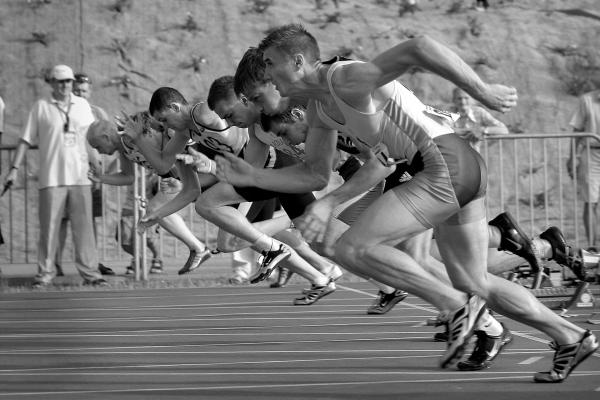Many naively argue that the misguided push to mix the two genders in sport is that there are no significant differences once the transgender male lowers their testosterone levels.
“There does not seem to be any reason to expect advantage for transgender people prior to puberty of or for transgender people whose gender-affirming treatment begins at the onset of puberty.”
- Joshua D Safer MD, Director of Mt. Sinai Center for Transgender Medicine and Surgery
Of course, gender-affirming hormonal therapy rarely occurs at the onset of puberty. One study reports that of 21,000 transgender adults, 41 percent received it, “and just 2.3 percent had access to it in adolescence.”
Let's look at some direct performance data and the significant differences in the two genders' psychological, musculoskeletal, and physiological characteristics.
No one will argue that once a male reaches puberty, which could begin as early as nine years of age, the physical performance differences between the two genders, due to major changes in anatomy and physiology, begin to magnify themselves in favor of the male, which any transitioning male to female athlete would carry with them into competition. However, there are clear advantages even before puberty. For example, consider the 2021 posted results of the USATF National Junior Olympic Track & Field Championships.
I have chosen to use the results provided for the 100 meters, 200 meters, 400 meters, 800 meters races, shot put, and javelin to demonstrate lower and upper body physicality. The representative age groups include both boys and girls between seven and fourteen. There were a total of 6 events per age group assessed, providing a total of 24 representative performance results.
Of the 24 performances, the boy’s times and distances were superior in 23 of the 24 events, with the lone exception of the 9-10-year-old 200 meters, where the female athlete outperformed the male by .02 seconds. However, the following four positions, 2nd - 5th, would have been boys.
- In the 7-8-year-old bracket, the girls would have placed 3rd, 4th, 6th, 7th, or 12th, if the races had been mixed. There was a 2-5% difference in lower extremity performances, increasing to 18%-25% for the upper body.
- In the 9–10-year-old bracket, except the 200 meters mentioned above, the girls winning their events would have placed 2nd, 4th, or 6th if events had been mixed. There was a 2%-5% difference in most lower body performances, increasing to as much as 15% in upper body shot put performance.
- In the 11–12-year-old bracket, the girls would have placed 2nd, 3rd, 4th, 5th, 6th, or 8th. There was a 1-6% difference in lower body performances, which increased to 18% for the upper body.
- In the 13-14-year-old bracket, the girls winning their events would not have qualified for the finals. There was a 4%-10% difference in lower body performance and a 20% difference in the upper body, even with the males using a heavier shot put.
These findings are not confined to the US. A 2021 review in the journal Sports Medicine stated
“An extensive review of fitness data from over 85,000 Australian children aged 9–17 years old showed that, compared with 9-year-old females, 9-year-old males were faster over short sprints (9.8%) and 1 mile (16.6%), could jump 9.5% further from a standing start (a test of explosive power), could complete 33% more push-ups in 30 s and had 13.8% stronger grip. Male advantage of a similar magnitude was detected in a study of Greek children….”
Pre-puberty performance differences are not negligible and can be easily attributed to the thousands of gene and regulatory differences between the two sexes from birth. Even if the transgender male to female athlete lowers his testosterone levels, he still brings to the competition the following advantages as a result of being male through puberty.
- A lower percentage of fat mass
- Significantly greater number of fast twitch muscle fibers, which are critical for speed and explosiveness in sport performance
- 33% greater lower body muscles mass, 40% greater upper body muscle mass
- Significantly longer arm and leg skeletal geometry
- 48% greater maximal pulmonary ventilation due to larger lungs, larger airways, and a greater number of alveoli
- Larger hearts, which allow for a 43% greater stroke volume at rest, increasing circulation and oxygenation.
- Hemoglobin levels are 11% higher, significantly increasing his capacity to deliver oxygen to working muscle tissue.
“Assertiveness is a key element of any sport and can be defined as forceful behavior with the intention to achieve the goal.”
– Psychology for Sports Performance
Gender differences in assertiveness, a component of physical aggressiveness, an essential component of athletic competitions, have been well-established; boys exhibit this behavior more often than girls. When speaking of aggression in sport, it is not the intent to cause harm to an opponent, the negative side of aggression, but an increased level of assertiveness to establish dominance rather than harm.
When discussing the athletic performance difference between men and women, it
“Isn’t the result of boys and men having a male identity, more resources, better training, or superior discipline. It’s because they have an androgenized body.”
- The Duke Law Center for Sports Law and Policy
The bottom line is that even if the transgender biological male suppresses his testosterone levels per the current guidelines, the advantages which have already incurred from being male through puberty should be considered a performance-enhancing “drug,” disqualifying the athlete from competition.




